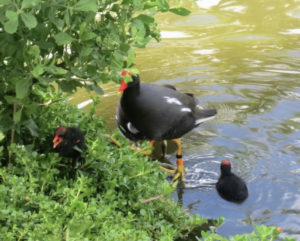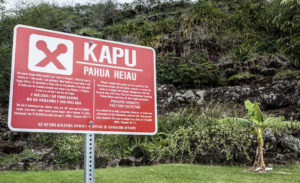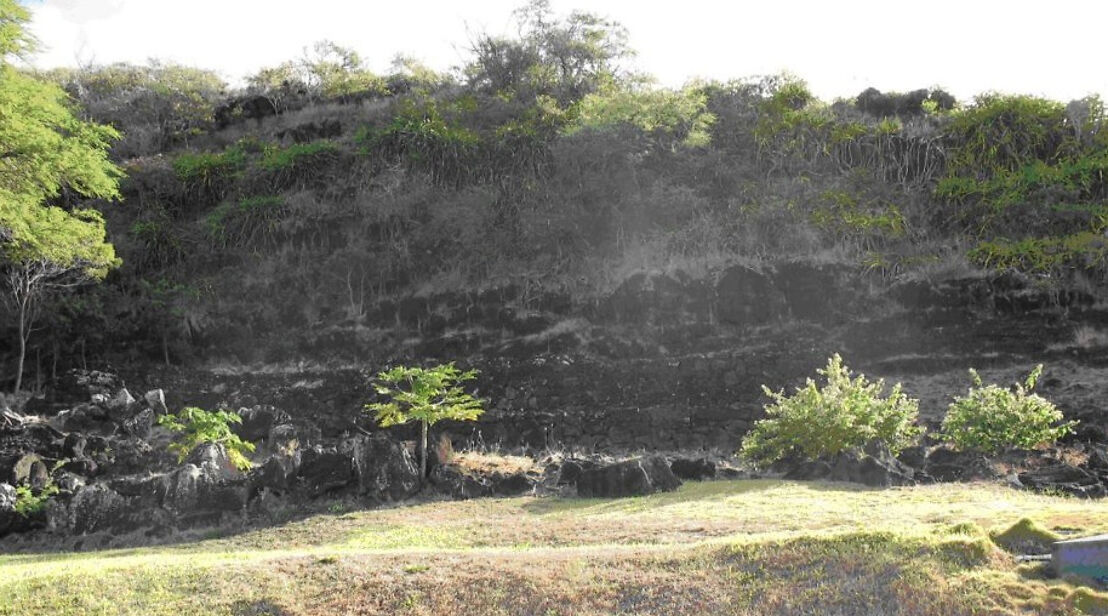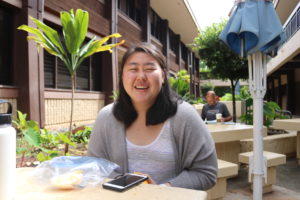By Cameron Enomoto | Staff Writer
For all residents of the Hawaiʻi, it is important to understand the meaning and stories of the land around us. In wā kahiko, the old times, there were many heiau that were constructed for different uses. These Hawaiian temples were used to worship gods, house priests, and offer sacrifices. Today, two protected heiau reside in Hawaiʻi Kai: Hāwea and Pahua heiau. Hāwea is managed by a non-profit organization called the Hawaiian Islands Land Trust and it is cared for by the Livable Hawaiʻi Kai Hui. Pahua heiau is owned by the Office of Hawaiian Affairs (OHA).

The ʻAlae ʻula bird is an endangered species that can be found in the Keawāwa wetlands. (Photo by Cameron Enomoto)
The name Hāwea comes from a sacred drum that originated in Tahiti and was brought to Hawaiʻi by Laʻamaikahiki, the son of the great chief Moikeha. This drum, made from shark skin, had never been seen in the Hawaiian Islands before and its appearance captured the interest of many. As Laʻamaikahiki traveled through Hanauma Bay and Maunalua, he chanted and played a strong rhythm. A copy of the drum was placed at Hāwea, though the original was relocated to Kūkaniloko heiau in Wahiawa.
The rich cultural history of Hāwea is preserved through ancient ahu, petroglyphs, and various agricultural structures. Additionally, the Keawāwa wetlands, which is adjacent to the heiau, provides a home for the endangered ʻalae ʻula (Hawaiian moorhen) as well as other birds and insect species. It is believed that Hāwea was once a luakini, which is a type of heiau that was used for human sacrifices.
The Livable Hawaiʻi Kai Hui hosts volunteer opportunities on the second Saturday of every month to clean up Hāwea heiau and Keawāwa wetlands. Some of the volunteer activities include weeding, mulching, pōhaku (rock) work, and other odd jobs like fishing tennis balls out of the wetland. The work is child-friendly, and there are many community members who enjoy donating their time for the betterment of those in the area.

Pahua heiau is owned by OHA and is currently closed off to the public. (Photo by Cameron Enomoto)
Pahua heiau in comparison to Hāwea is much more concealed from the community. The name was given by a native Hawaiian informant to Gilbert McAllister, an archaeological surveryist, in the early 1930s. It is on private property that is located at the base of Kamilonui ridge. The heiau is estimated to be around 600 years old and is thought to have been an agricultural (Ipu o Lono) or fishing shrine (koʻa), though it is rumored to have been a luakini heiau with remains hidden beneath the soil.
At one point, OHA was hopeful that the area would be open to the public in an effort to revive its cultural significance. However, the site is currently closed off and, according to the OHA website, trespassers will be cited. Its use is restricted to historic purposes with the objective of educational and cultural opportunities for Native Hawaiians. It is possible that Pahua heiau may be open for cleanup days, similar to Hāwea heiau, though nothing has been confirmed.
As a member of the Maunalua community, it is important to preserve these sacred sites because they provide a tangible presence of what once was in the past and they offer many educational and social benefits related to Hawaiian culture and history. Ultimately, preservation is a powerful asset that has the potential to revitalize neighborhoods, restore pride in local heritage, and create a sense of respect for the land we live on.
For more information on cleanups, visit the Livable Hawaiʻi Kai Hui website and their Instagram.






